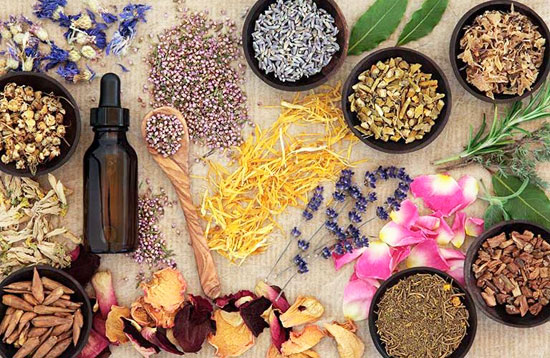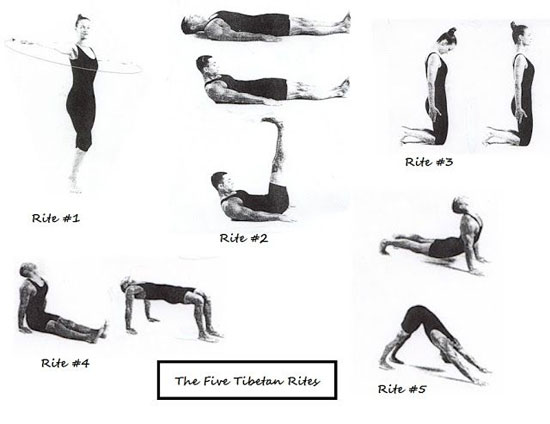Top Practices, Herbs and Foods to Encourage a Long and Vibrant Life (1)
Let’s face it, modern life can be taxing. From jammed packed schedules to environmental toxins, along with questionable food and water quality, we need all the help we can get to stay fit, energetic and disease-free. However, more often than not, we forego health-enhancing practices because we just don’t have the time or energy.

What we need are supercharged practices, foods and herbal remedies that will support well-being and vitality without requiring a large investment of time, effort or cash. As luck would have it, traditional cultures discovered the secret to a robust life long ago and have preserved this knowledge so people like us can reap the benefit today.
Power of the Breath
Used for thousands of years by Hindu yogis, pranayama is a practice of ultimate simplicity, yet offers profound results. In just a few minutes a day, alternate nostril breathing helps to calm an agitated mind and smoothes ruffled emotional states, clarifies thinking, improves sleep and soothes the nervous system.
Since stress is the underlying cause of a majority of health complaints, facing life from a place of tranquil equilibrium can go a long way in improving the quality and length of life. On top of that, yogis believe many diseases are linked to erratic nasal breathing because the nose is intimately linked with the brain and nervous system. In addition, the practice synchronizes both hemispheres of the brain – the creative, feeling right side and the thinking, analytical left – which leads to increased lucidity.
Another way alternate nostril breathing reduces stress is by triggering the parasympathetic nervous system, thereby calming unruly emotional storms. It also quiets an over-active mind. Add to this a nice dose of oxygen to both brain hemispheres, while also detoxifying the lungs, and alternate nostril breathing is an invaluable technique for tackling our daily demands.
The Practice
Begin by closing off the top right nostril at the bone with your thumb.
Slowly inhale through the left nostril.
Pause briefly.
Next, close the top of the left nostril with the ring finger at the bone. Release the thumb off the right nostril.
Exhale through your right nostril. Then inhale through the right nostril.
Pause.
Once again, close the right nostril with your thumb.
Breath out through the left nostril.
This completes one basic cycle. In the beginning, start with 2-3 cycles and slowly increase. You can also breathe in counts of four during each inhalation, holding and exhalation.
A word of caution: Do not pause your breath if you are pregnant or have high blood pressure.
How to Improve Immunity in 20 Seconds or Less
Beating the chest isn’t just for gorillas – it also happens to be an extraordinary practice for humans that stimulates the release of white blood cells by the thymus gland. These cells are the vanguard of the immune system, which help protect us against disease and contagious illness.
A major player in keeping us healthy, the thymus gland sits right behind the sternum (sometimes referred to as the breastbone). To give you an idea of the importance of this gland, the Greek word thymos means “life energy.” It’s also known as the happiness point and – when working properly – can dispel negativity, encourage calm, provide energy, and increase vitality. As part of the lymphatic immune system, the thymus needs to be stimulated regularly since it can atrophy with age. Fortunately, it’s easy to activate the gland with a few quick thumps to the sternum.
Here’s how:
While breathing deeply, thump up and down your sternum with a closed fist. You can also say any meaningful and positive affirmation during the practice. Continue thumping for 20 seconds. A tell-tale sign your thymus has been activated is a tingling sensation and gentle feeling of joy. Ideally, you will want to engage in the practice 1-3 times per day, more if you are under stress, anxious or feeling under the weather.
Barefoot, Happy and Healthy
Associated with reduced inflammation and cardiovascular disease, a strong immune system and slowed aging, earthing is a fabulous practice to adopt on a daily basis. Simply place your bare feet on a stretch of beach or a patch of ground and soak up the healing energy of the earth. Moist grass will work too. Really, that’s it. But the benefits are truly spectacular.
Earthing has been linked with:
• Sound sleep
• Heightened clarity
• A serene nervous system
• Reduction in depression
• Decrease in PMS symptoms
• Accelerated healing
• Boundless energy
• Protection from electromagnetic fields (EMFs)
Dr. James Oschman, an expert in biophysics energy medicine, believes the earth is a powerful tool for healing. When we connect bare feet with the earth, we absorb the most potent antioxidant known: free electrons. By scavenging and counteracting free radicals in the body, antioxidants reduce inflammation along with cell and tissue damage.
Remember, excessive inflammation is the curse of health and plays a major role in everything from heart disease to cancer and diabetes. With the advent of rubber soled shoes, we have fundamentally blocked ourselves from the earth’s supply of healing free electrons – all the while promoting the rise of modern disease.
As children, we instinctually relished walking barefoot. As it turns out, there’s a valid reason for this pleasure – the foot contains an intricate (and sensitive) network of nerves and acupuncture points. Because of this, the feet are especially proficient at absorbing free electrons.
One of the ultimate sources of free electrons can be found in salt water. If we want to enjoy the ultimate benefit of earthing, walking barefoot in the water along a seashore is your best bet. A close second would be planting your feet squarely on dewy grass in the morning. For optimal results, practice earthing for a minimum of ten minutes each day.
The Five Rites of Rejuvenation

Brought to the West by a retired British army officer in the early 20th century, the Five Rites of Rejuvenation are renown for their ability to increase longevity, strength and energy. Believed to have originated in the Himalaya’s, the rites only take a few minutes a day, but have a profound impact on health.
A series of five exercises, the movements improve digestion and circulation, while quelling depression and fatigue. Those who have embraced the practice rave about increased clarity, vitality and zest. The five rites are said to quickly balance the hormonal system, which subsequently promotes longevity, discourages disease and slows aging.
Individuals who consistently practice the five rites report the following benefits:
• Weight loss
• Enhanced vision, digestion and sleep
• Deepened stamina and concentration
• Increased happiness and well-being
• Reduced stress and lower blood pressure
• Diminished back, neck and joint pain
• Improved management of diabetes
The entire sequence is easy to learn and takes under ten minutes to complete.
The Practice
Consult with your health care provider before attempting the following exercises if you are on medication or have health issues. Begin slowly with seven repetitions of each exercise and gradually work your way up to the maximum of twenty-one. Always complete each rite by coming into a standing position, back straight with hands on the hips, and taking two deep breaths.
First Rite
Stand straight with arms extended horizontally, palms facing down. Turn in a clockwise direction until slightly dizzy. Like push-ups for the inner ear, this rite helps to improve balance and stability – especially as we age.
Second Rite
Lie flat on your back with arms at your side, palms facing down. With the lower back pressed flat into the floor, inhale and raise legs to a vertical position with straight knees. While holding legs in this position, lift your head off the floor – tucking the chin into the chest. Gently lower both legs and head to the floor while exhaling. Benefits include improved thyroid function and digestion, increased metabolism and overall better health of the lower back.
Third Rite
Kneel on the floor with toes curled under. Keep the back straight and brace the hands (palms down) against the back of the thighs. Inhale and arch the head, neck and spine backwards. Exhale as you return to an upright position. Helps to fortify core muscles and stimulate the solar plexus, heart and throat chakras.
Fourth Rite
Sit on the floor with a straight back and legs extended, spaced about 12 inches apart. Keep arms at your side with palms pressed to the ground. Tuck the chin towards the chest. Inhale and drop the head backwards while raising the hips and knees to a flat plank position. Exhale and lower the body back to a sitting position. Strengthens the arms, back and thigh muscles.
Fifth Rite
Lie face down on the floor with arms bent and palms pressed flat into the mat. Gently raise the upper body and balance on the balls of the feet while inhaling and arching the head and neck backwards. Next, bending at the hips, pull the body up into an inverted “V” and tuck the chin against the chest. Exhale and return to starting position. Supports all chakras and fortifies the entire body.
Detailed instructions can be found in Chris Kilham’s book, The Five Tibetans: Five Dynamic Exercises for Health, Energy and Personal Power, Inner Traditions / Healing Arts Press 2011.
Read the second part of the article
yogaesoteric
December 15, 2019
Also available in:
 Français
Français
